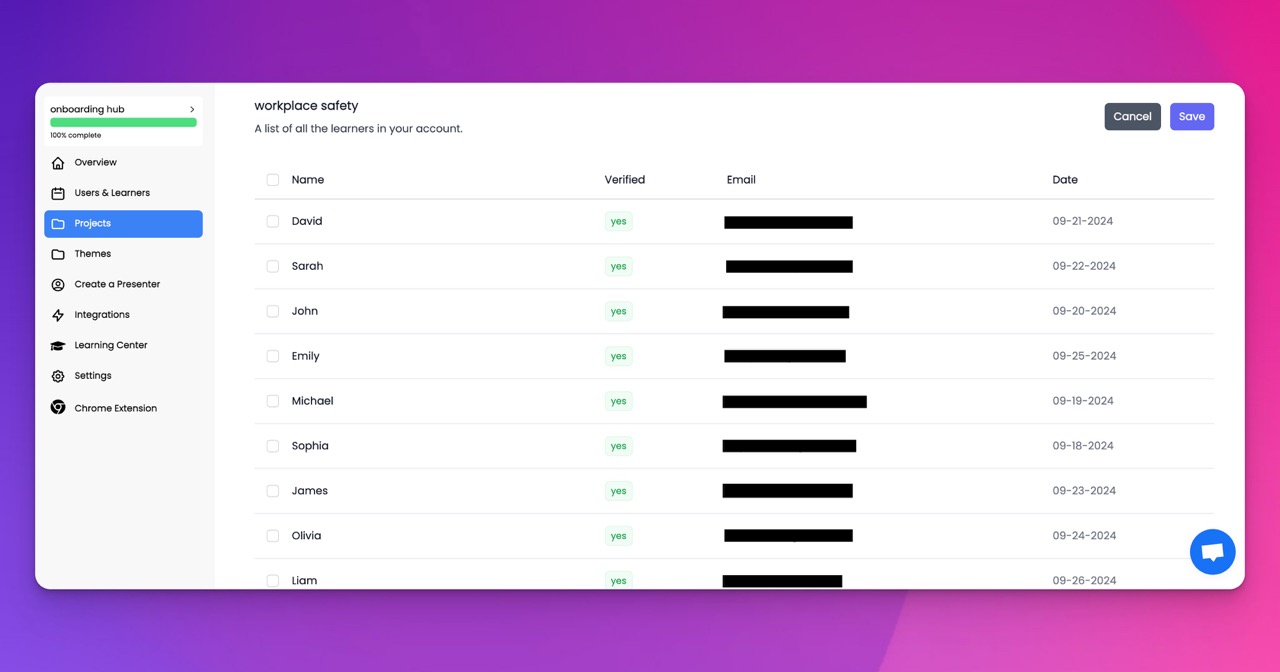🎉 Trainday now integrates with Zendesk and Hubspot 🎉 Trainday now integrates with Zendesk and Hubspot 🎉 Trainday now integrates with Zendesk and Hubspot
🎉 Trainday now integrates with Zendesk and Hubspot
Contact
Banking
Creating a Positive Work Culture in the Banking Sector for Better Retention
Creating a Positive Work Culture in the Banking Sector for Better Retention: Leveraging Data and Artificial Intelligence for Efficient Employee Training
In today's banking sector, fostering a positive work culture has become critical for attracting and retaining talented employees. A positive work environment not only enhances productivity but also promotes employee satisfaction, engagement, and overall well-being. To achieve this, banks are increasingly turning to data and artificial intelligence (AI) to create relevant and efficient employee training courses. This blog post explores how leveraging data and AI can help establish a positive work culture and improve employee retention in the banking sector.
1. Understanding the Importance of Positive Work Culture:
A positive work culture is an amalgamation of shared values, beliefs, attitudes, and behaviors that define an organization's work environment. It is vital for creating a sense of belonging, job satisfaction, and employee motivation in the banking sector. Research suggests that employees in a positive work culture are more engaged, productive, and committed to their organizations.
2. The Role of Data in Identifying Training Needs:
In the banking sector, data plays a crucial role in understanding the training needs of employees. By analyzing employee performance data, banks can identify skill gaps, areas for improvement, and specific training requirements. Data-driven insights enable banks to tailor training courses to address individual needs and enhance overall employee performance.
3. Utilizing Artificial Intelligence for Efficient Training:
Artificial intelligence has revolutionized the way organizations deliver employee training. AI-powered tools and platforms can efficiently analyze vast amounts of data to personalize and automate training programs. By leveraging AI, banks can create adaptive learning experiences that cater to individual learning styles, preferences, and skill levels. This not only enhances training effectiveness but also reduces training time and costs.
4. Implementing Virtual Reality (VR) and Augmented Reality (AR) for Immersive Training:
Virtual Reality and Augmented Reality technologies are gaining momentum in the banking sector for employee training purposes. These innovative technologies provide immersive and interactive experiences, enabling employees to simulate real-life scenarios. VR and AR can be particularly useful for training bank tellers, customer service representatives, and fraud detection teams. Such immersive training can enhance practical skills, decision-making abilities, and boost overall employee confidence.
5. Continuous Learning and Development with AI:
AI-powered learning platforms can support continuous learning and development initiatives within the banking sector. These platforms can provide personalized recommendations for additional courses, certifications, and career development opportunities based on individual employee profiles and job roles. By facilitating ongoing learning, banks can foster a culture of growth, increase employee engagement, and improve retention rates.
Conclusion:
Creating a positive work culture is paramount for the banking sector to attract and retain top talent. Leveraging data and artificial intelligence enables banks to design relevant and efficient employee training courses. By analyzing data, identifying training needs, and utilizing AI-powered tools, banks can offer personalized and adaptive learning experiences. Implementing VR and AR technologies further enhances training effectiveness. Overall, investing in a positive work culture through data-driven training approaches not only benefits employee retention but also drives organizational success in the banking sector.
Accelerate Compliance.
Deliver OSHA-Ready Courses Instantly.
Empower your team with data-driven training solutions tailored to your industry's safety standards. Stay compliant, reduce risks, and boost productivity with AI-powered course creation.
